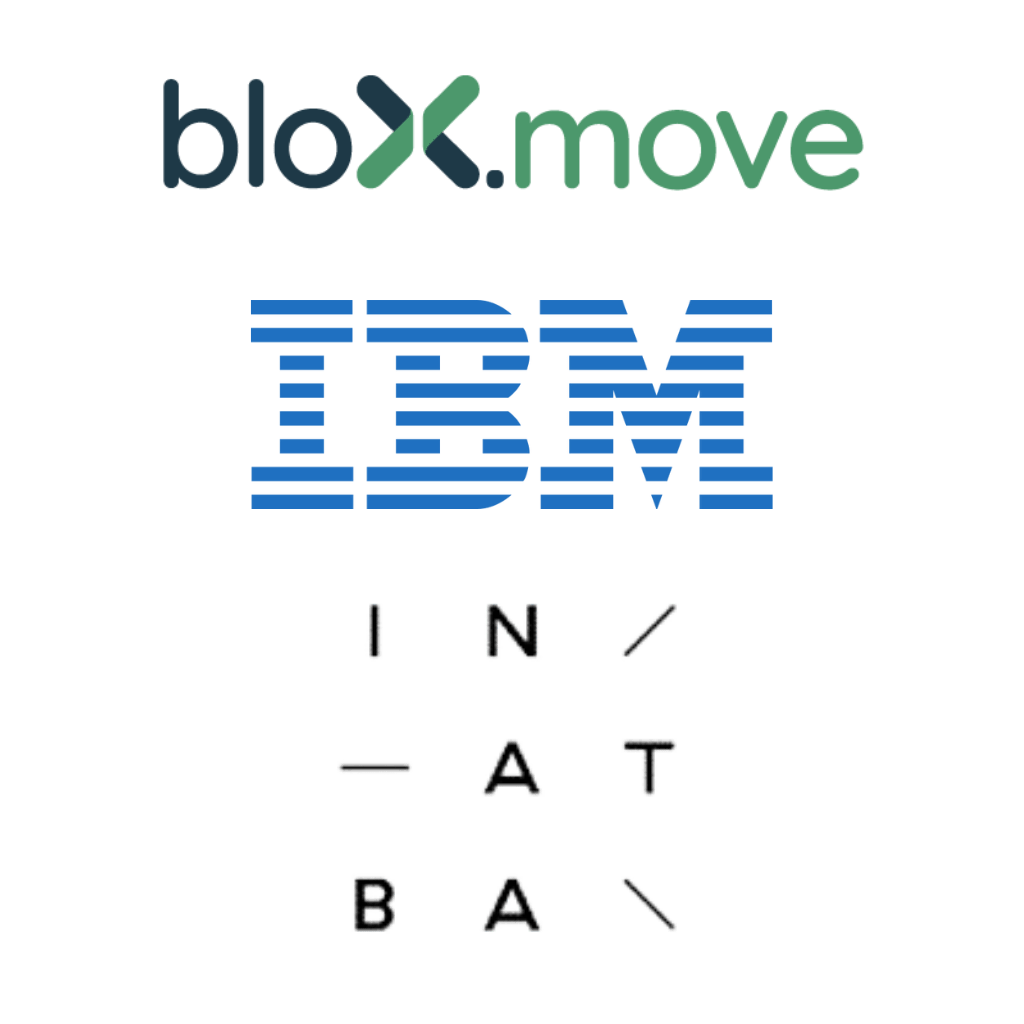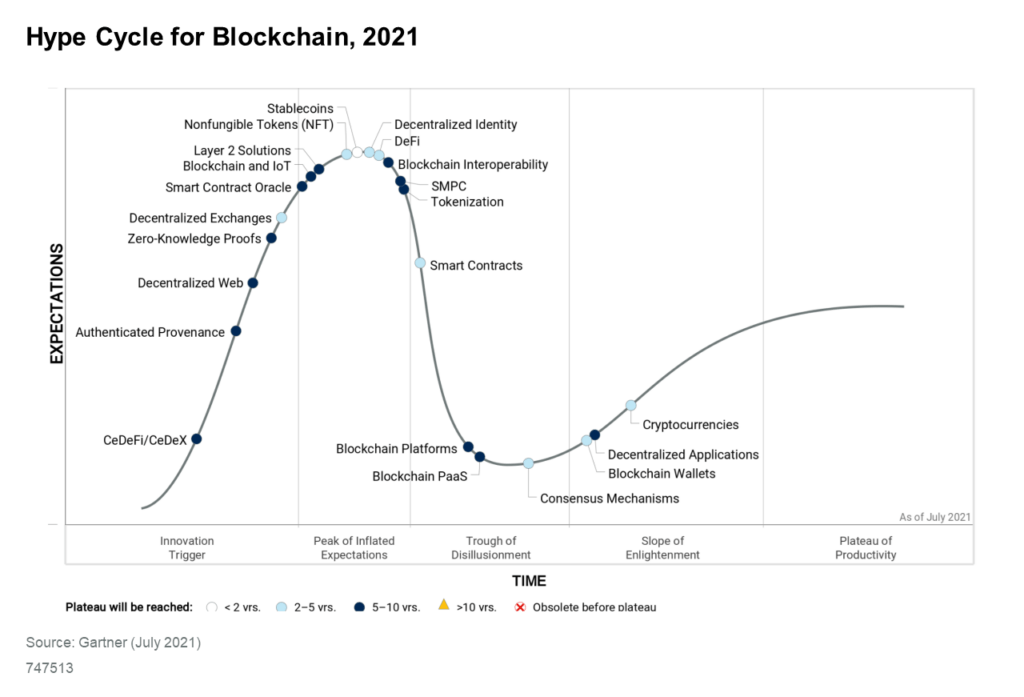Blockchain Value
Open discussion with BLOXMOVE, IBM and INATBA

Blockchain Value
Open discussion with BLOXMOVE, IBM, and INATBA
The Value of Blockchain: Is Crypto the Tip of the Iceberg?
With Sophia RÖDIGER, CEO of BLOXMOVE, Luca COMPARINI, Blockchain Practice Leader Europe & France at IBM and Marc TAVERNER, Executive Director at INATBA
December 2dnrd, 2022
New technologies like blockchain are opening up a completely new economy full of opportunities whose potential is still to be exploited. This December 2nd 2021, in the context of the Blockchain Venture Day, a unique ecosystem supported by the European Commission, corporates, investors, entrepreneurs and institutions challenged the notions of data privacy, trust, data sovereignty and openness blockchain is said to bring.
It was the opportunity for our 3 experts: Luca Comparini, Blockchain Practice Leader Europe & France at IBM France, Marc Taverner, Executive Director at INATBA and Sophia Rödiger, CEO of BLOXMOVE to challenge the value of Blockchain beyond Crypto. The aim of this session was indeed to discuss the societal & business value of Blockchain through specific use case scenario.
Open discussion
How companies are embracing the Blockchain evolution or revolution?
Luca Comparini, Blockchain Practise leader Europe & France at IBM Consulting, opened the discussion with a keynote presentation highlighting the key added value of Digtal Ledger Technologies and the main Blockchain applications developed or implemented by companies when they embrace the Blockchain evolution. Luca Comparini presented the key added value of DLT by allowing data to be:
- Shared & replicated
- Immutable
- Non repudiable
- Enabling smart contracts
During his presentation, Luca Comparini also introduced us with 3 use cases and their main added-value for companies and industries:
1 -Traceability
- Multiparty systems and platforms for supply chains management ;
- Traceability for operational excellence ;
- Augmented traceability for better visibility / Track & trace processes ;
- Augmented transparency for product differentiation and trust creation on label assessment.
2 – Tokenisation and proof of ownership
- Finance: Crypto currencies of course but also Security of digital assets ;
- Non-Fungible Tokens (NFT): Uniqueness and scarcity are the main drivers for those assets.
- Fungible / Non-fungible & fungible within classes (semi-fungible)
- Transferability from primary market to secondary market
3 – Self sovereign identity (privacy preserving) – creating Trust
Individuals receive credentials and load them into their wallet on their smartphone so they can share it with a verifying organisation. Two elements of novelty in this: the individuals can create trust without divulgating personnel information and the individual is the only owner of its data.
How does BloX.Move fit with this vision?
Sophia Rödiger explains that the concept of digital identity and identifiers is totally changing the way we can use digital and physical assets. They provide us with clear identification keys and give back the ownership of data to the right persons. For BloX.Move these digital identity and identifiers are what will allow to go far beyond data roaming and build further services roaming, like mobility services in their case.
BloX.Move has also decided to develop a coin owned by a Singaporean foundation. They needed a utility token to design smart BtoB settlements: allowing people paying only once for a mobility service implying various mobility providers. Hence, BloX.Move creates value for individuals benefiting from a seamless journey. On top of that, BloX.Move expects the utility token to support a reward and incentive process to encourage clean transportation and develop green mobility. This incentive is a key element of a succesfull tokenisation model
How to measure Impact in Blockchain?
Marc Taverner reminds us that during the COP 26 meetings, the INATBA’s Social Impact work group had the opportunity to present a series of Blockchain applications and uses cases creating positive social & environmental impact. Part of the topics were the distribution of clean drinking water in Africa or social security payment directly to the beneficiaries. For all use cases presented, the key was to give back the ownership of data to those who should benefit from it.
Marc Taverner stresses that the challenge when examining how to measure the impact of those projects and the impact of the implemented technologies is the absence of standardised metrics. The INATBA’s Social Impact work group has decided to develop a standardized taxonomy to better assess social impact of blockchain use cases.
He continues explaining us that a positive use of tokenization has also been exemplified during the meeting. A company created NFTs out of the image of the UN sustainability goals that were projected on the building where the negotiations were taking place. Then those NFTs were sold to finance actions in favour of UN sustainability goals.
Within the 170 members constituting the INATBA community, there is at least two common challenges that they are all facing, whatever their use cases, their size, and their business models and that we collectively have to tackle if we want to allow mainstream adoption of Blockchain use cases:
- The urgent need to develop standards and interoperability, a regulatory framework to overcome geographical and legal restrictions ;
- The Education challenge and the lack of skills and talents which is a big inhibitor to mainstream Blockchain adoption.
The population of BC developers and cryptographers is today evaluated to 1M in the world when the population of developers working on Oracle is about 8M people.
To agree on Sophia Rödiger and Marc Taverner’s advocacy for more interoperability, Luca Comparini highlighted that the only platforms that will survive in the future are the ones that will be operating with the others by being interconnected to legacy systems (for stable coins for example) and interoperable, having common understanding of self-sovereign identity. Interoperability is key.
To further elaborate on the need for a common metrics to measure BC impact, Sophia explained the various challenges BloX.Move is trying to address:
- Through their “mobility portefolio”. They are trying to solve the difficulty people faced to change their mobility behaviour because of the very fragmented mobility offers.
- Through their digital identifiers system. They address the need for cleaner energy and cleaner mobility by connecting the mobility assets to the energy grids.
She highlighted that through DLT, we have a great opportunity to build new business models allowing new ways of working between various applicative sectors which are, till now, still working in silos. Luca Comparini confirmed that the use cases that were the most successful were those where all the partners had a real incentive to share their data and breaking the silos.
The Hype Cycle for Blockchain from Gartner

Do you share the same vision as Gartner? Tokenisation is at the top of the hype, do you expect the disillusion before reaching the plateau?
Luca Comparini:
BC platforms facing “Trough of disillusionment” is a good news because it means that we are nearly reaching the plateau of productivity. Most of the BC platforms require a certain level of adoption to generate the network effect and become mainstream. The technical and political complexity of adoption explains why it takes time.
NFTs, Stable coins being on the top of the curve is a very good news also as they will soon be mainstream.
We have to keep in mind that Blockchain is an infrastructure which is difficult to insert in an ecosystem because it has a critical impact on the foundations of this ecosystem. The effort made to develop an infrastructure make it all the more difficult and costly to be change afterward.
For example, the decentralised identity concept is key for developing new data treatment. The shift in data valorisation is a change in paradigm which is there to stay but shall take some time.
Sophia Rödiger:
It is really a good news to sea that Blockchains platforms, wallets and decentralised application are right now near to the plateau of Productivity. This is indeed where BloX.Move is. Our solution is generating a hight interest and not fear anymore.
It’s not as easy to explain people the benefits they can expect from Blockchain but we are starting to figure it out. Develop awareness on Blockchain added-value is key and will help us develop this new dynamic in Education.
Marc Taverner:
Blockchain has been over-hyped in a way and it was good that we’ve been facing a trough of disillusionment because it has forced people to think further, create real value and demonstrate real use cases & valuable applications.
It would be interesting to get a hype cycle on Blockchain applications and not only on Blockchain infrastructures. It’s not the way we’ve had looked at the development of internet. We really need to put some concept into concreate applications. For example, we need to go further in enforceability of smart contracts.
We should focus more on nice use cases and the value created for people and then indeed, it will help solve the challenge of Education and bring Blockchain to the next levels.
Sophia Rödiger
CEO


CEO & founder of BloX.Move, a mobility BC platform: applying decentralized technologies and digital identity and identifiers into an urban world, creating a “mobility wallet” for individuals to benefit from a “mobility alliance” of mobility services providers.
Luca Comparini
Blockchain Practice Leader Europe & France


Luca Comparini is the head of the Blockchain in IBM France since September 2015. With more than 10 years of experience in IT, he is described as a “business-oriented geek”, passionate on Open Source ecosystem and areas of innovation such as Blockchain, connected objects and cognitive computing. Luca joined IBM in 2007, for the role of IT architect managing virtualization and IT infrastructure consolidation domains. He held various positions in Europe in the areas of open-source software within Lab Services (2009-2013) and the team in charge of ecosystem development of partners and start-ups (2014-2015).
Marc Taverner
Executive Director


Executive Director at INATBA, is a trade organisation focused on the Blockchain industry that gathers 170 European members and covers the full spectrum from non-profit to large enterprise. INATBA works at the interface of public and private discussions on Blockchain: regulatory policies and strategic legislation developments.
